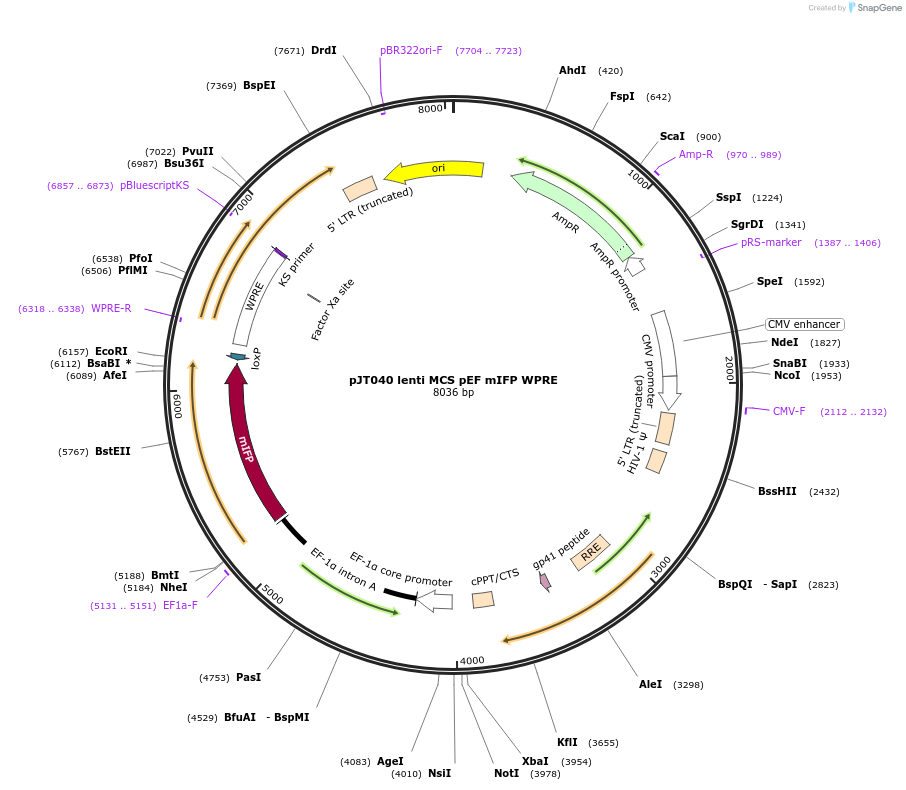pJT040 lenti MCS pEF mIFP WPRE
(Plasmid
#161929)
-
PurposeLentiviral expression of mIFP with multiple cloning site upstream the pEF promoter
-
Depositing Labs
-
Sequence Information
Ordering
| Item | Catalog # | Description | Quantity | Price (USD) | |
|---|---|---|---|---|---|
| Plasmid | 161929 | Standard format: Plasmid sent in bacteria as agar stab | 1 | $89 | |
Backbone
-
Vector backbonepMCB320
- Backbone size w/o insert (bp) 8907
- Total vector size (bp) 8047
-
Modifications to backboneReplace mCherry Puro with mIFP. Replace U6 sgRNA with MCS.
-
Vector typeMammalian Expression, Lentiviral, Synthetic Biology
-
Selectable markersBlasticidin
Growth in Bacteria
-
Bacterial Resistance(s)Ampicillin, 100 μg/mL
-
Growth Temperature37°C
-
Growth Strain(s)NEB Stable
-
Copy numberHigh Copy
Gene/Insert
-
Gene/Insert namemIFP
- Promoter pEF
Cloning Information
- Cloning method Gibson Cloning
- 5′ sequencing primer ggatcttggttcattctcaagcctc
- (Common Sequencing Primers)
Resource Information
-
Supplemental Documents
Terms and Licenses
-
Academic/Nonprofit Terms
-
Industry Terms
- Not Available to Industry
Trademarks:
- Zeocin® is an InvivoGen trademark.
Depositor Comments
Lentiviral vector for expression of mIFP. Has a multiple cloning site upstream of the pEF-mIFP cassette.
Cloned with reagents shared by and in collaboration with Michael Bassik.
These plasmids were created by your colleagues. Please acknowledge the Principal Investigator, cite the article in which the plasmids were described, and include Addgene in the Materials and Methods of your future publications.
-
For your Materials & Methods section:
pJT040 lenti MCS pEF mIFP WPRE was a gift from Michael Bassik & Lacra Bintu (Addgene plasmid # 161929 ; http://n2t.net/addgene:161929 ; RRID:Addgene_161929) -
For your References section:
High-Throughput Discovery and Characterization of Human Transcriptional Effectors. Tycko J, DelRosso N, Hess GT, Aradhana, Banerjee A, Mukund A, Van MV, Ego BK, Yao D, Spees K, Suzuki P, Marinov GK, Kundaje A, Bassik MC, Bintu L. Cell. 2020 Dec 9. pii: S0092-8674(20)31541-5. doi: 10.1016/j.cell.2020.11.024. 10.1016/j.cell.2020.11.024 PubMed 33326746



